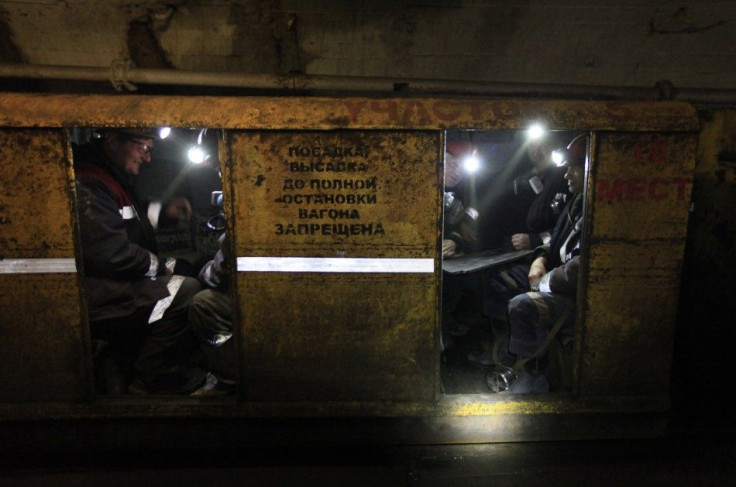Trapped Miners: One Man Found Dead in Wales

One of four Welsh miners trapped in a colliery in the Swansea valley has been found dead, while rescue and emergency officials continue to dig out the other three men.
The miners became trapped almost 300 feet underground when a tunnel collapsed and flooded the Gleision Colliery near Pontardawe on Thursday morning.
According to BBC, no methane has been detected in the drift mine and there appears to be enough oxygen.
About 50 rescuers are involved in the emergency
The three miners were identified by local media as: Charles Breslin, 62; David Powell, 50; Garry Jenkins, 39; and Phillip Hill, 45.
The identity of the deceased miner in not yet known, but local media said his body was located in a very deep part of the mine early Friday.
Cheryl Gillan, the Welsh Secretary, told BBC that she will call a civil contingency meeting in the cabinet office. She also indicated that British Prime Minister David Cameron has been apprised of progress at the mine while visiting Libya.
However, worries are growing over the health of the remaining miners.
We still don't know where the trapped miners are,” lamented Neath MP Peter Hain.
The rescue workers are right down to the sump at the bottom which shows the remaining three miners are not in that area so must have been trying to get back into the old workings to escape the existing mine. The good news is oxygen is circulating in the mine and the old mine workings, creating a circular supply of air.
While the relatives of the miners are being informed of any new developments in the rescue operation, Welsh First Minister Carwyn Jones told media: There are four groups of people in there waiting to hear the fate of their loved ones. It's a very, very difficult time. They have a lot of support, not just from Wales but around the world. Until we know the outcome, it's always going to be very difficult.
He added: “All I wanted to do is come here and chat. The real work is being done at the Gleision mine. To think of a mining accident happening now is difficult to imagine.
A BBC reporter in a community center in Wales huddled with families and friends of the miners. He described what he saw this way: “There are some worried and anxious faces. Community is the operative word though; it's where the friends and family have gathered for the last 20 hours. They've been inundated with food parcels and support, and a steady stream of locals have been bringing cakes and biscuits. Family members have been putting in shifts waiting for news. They've been helped by the Red Cross and organizations like the WRVS [charity]. I've now moved a mile up the road to the entrance to the access road to the mine. All night there has been a stream of emergency service vehicles and heavy pumping equipment.
He added: “A 50 strong rescue team has been working through the night to lower the water level, that's the crucial thing. Specialist divers have felt their way 30m into the shaft but they can't get any further because of low visibility and debris blocking the rest of the route. We know the miners are experienced and the hope is they have made their way to higher ground within the mine. They're thought to be 90m below the surface and specialist listening equipment has been brought in.”
BBC stated that while most mines in south Wales are now closed; a few small-scale collieries are still active.
The Gleision Colliery has been in operation since 1993.
Wales was once synonymous with coal mining.
In 1874, Welsh mines produced 16.5-million tons of coal, of which about 25 percent was exported overseas. By 1913, Wales produced 57-million tons of coal. At its peak, in 1920, more than 270,000 pitmen worked in Welsh mines.
© Copyright IBTimes 2024. All rights reserved.




















